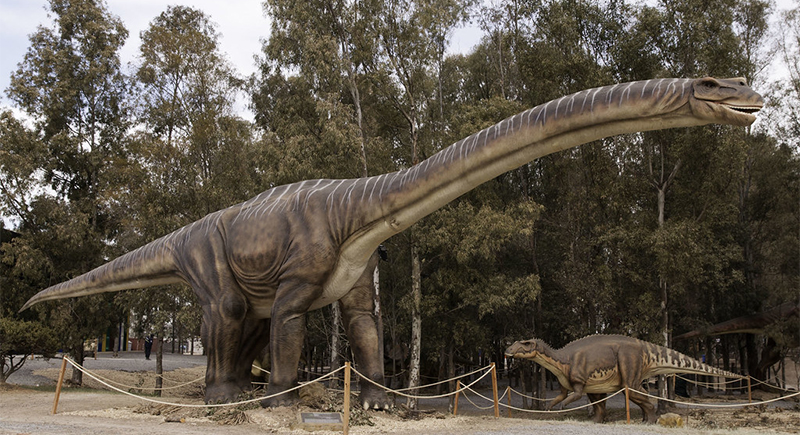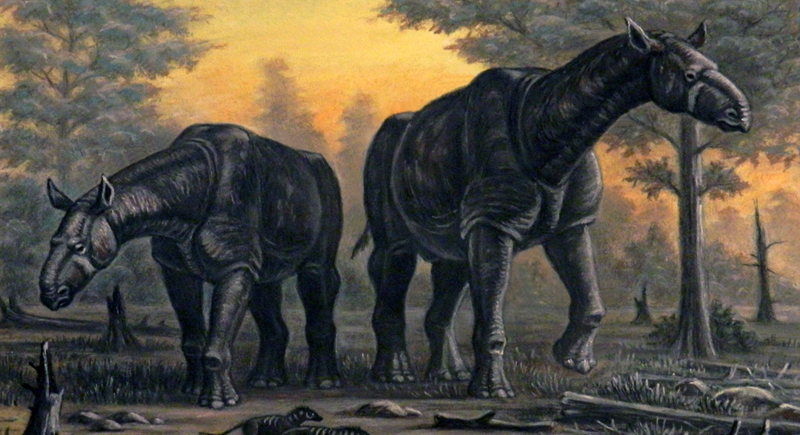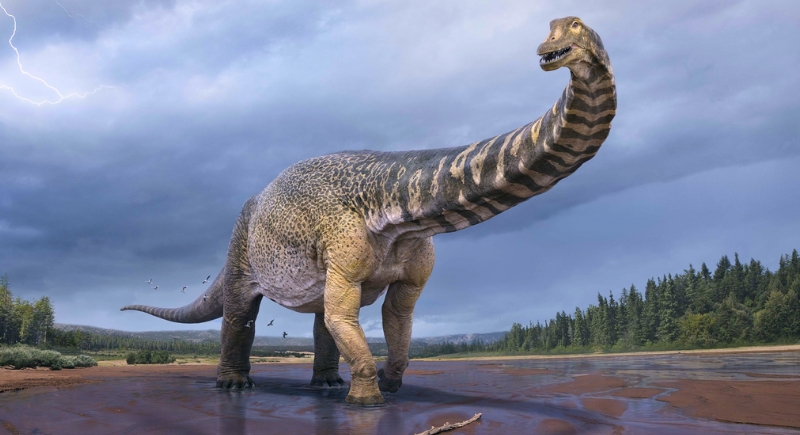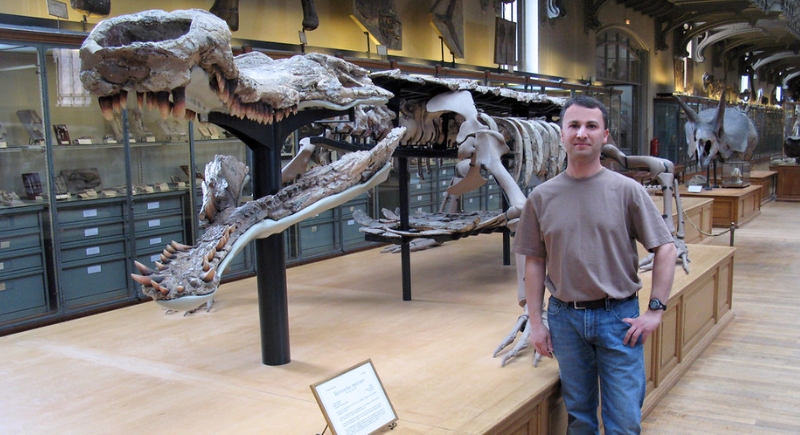12 Biggest Creatures to Ever Roam the Earth
Our beloved planet has seen giants that dwarf most animals alive today. These massive creatures lived across different time periods and belonged to all kinds of environments, including deep oceans and dense jungles.
Here’s a closer look at the biggest animals that ever roamed our planet—some were longer than buses, others heavier than airplanes.
Argentinosaurus

Credit: flickr
Estimated Length: 100 feet
Weight: Around 65 to 80 tons
This creature was so big that scientists literally thought its bones were fossilized trees. It stretched around 100 feet long and weighed as much as a Boeing 737. The Argentinosaurus lived in South America and probably didn’t move fast. But honestly, when you’re that massive, who’s even chasing you?
Patagotitan Mayorum

Credit: flickr
Estimated Length: 102 feet
Weight: Around 70 tons
The neck of this massive animal demands attention. The Patagotitan, found in Argentina in 2014, might have been even bigger than the Argentinosaurus. Museums had to build their skeletons across multiple rooms to accommodate their size. Some experts say it had less body mass, though. Either way, it was a leaf-munching beast of prehistoric proportions.
Spinosaurus

Credit: flickr
Estimated Length: 46–59 feet
Weight: Up to 10 tons
Spinosaurus looked like someone mashed up a crocodile and a dinosaur. It had a huge sail on its back and a long snout full of sharp teeth. Most of the time, it stayed in the water hunting fish. It was more like a dinosaur that lived like a giant river monster.
Blue Whale

Credit: flickr
Estimated Length: 98 feet
Weight: Up to 200 tons
This animal is still swimming around today. Blue whales are the biggest animals ever, not just now—ever. Their hearts are the size of golf carts. The most interesting fact, though, is that they survive on krill, those tiny shrimp-like things. It’s wild how something so huge eats something so small.
Dreadnoughtus

Credit: Reddit
Estimated Length: 85 feet
Weight: Around 65 tons
The name literally means “fears nothing,” which feels pretty accurate. It had a massive body, a super long neck, and probably walked around with zero concern for predators. It’s one of the most complete fossils of a giant dinosaur ever found, which makes it extra important to scientists.
Megalodon

Credit: flickr
Estimated Length: 50–60 feet
Weight: Up to 60 tons
Sharks have always maintained a scary image as deadly predators. Now imagine a shark the size of a school bus and make it more terrifying. That’s Megalodon for you. These creatures had hand-sized teeth and a bite force that could crush a car. It ruled the oceans for millions of years. Even whales weren’t safe. Thankfully, it went extinct before humans showed up.
Paraceratherium

Credit: Wikimedia Commons
Estimated Height: 16 feet at the shoulder
Weight: Up to 20 tons
This one wasn’t a dinosaur but a giant mammal that looked like a hornless rhino. It lived in Asia and stood as tall as a giraffe. It weighed about 20 tons, which is like four elephants stacked together. Despite their size, they probably just wandered around, eating leaves and minding their own business.
Shastasaurus

Credit: Wikimedia Commons
Estimated Length: 65 feet
Weight: Up to 40 tons
Shastasaurus looked similar to a dolphin but stretched way out. But unlike other sea reptiles, it didn’t have sharp teeth for hunting. Instead, it likely used suction to slurp up squid and soft prey. It swam the oceans back in the Triassic period, long before the age of giant sharks.
Bruhathkayosaurus

Credit: Facebook
Estimated Length: 145 feet
Weight: Possibly around 110-170 tons
Bruhathkayosaurus sounds like a tongue-twister in the dino world. But this one’s a bit of a mystery. The fossils found in India were massive, but they were also incomplete. Some scientists think it was the biggest dinosaur ever—maybe even heavier than Argentinosaurus. But with so few bones, we’re still not totally sure.
Sarcosuchus

Credit: flickr
Estimated Length: 40 feet
Weight: Up to 10 tons
They called it “SuperCroc” for a reason. This thing was twice as long as a modern crocodile and way heavier. Its skull alone was six feet long. It probably waited in rivers and ambushed anything—including dinosaurs—that got too close to the water.
Amphicoelias Fragillimus

Credit: Wikimedia Commons
Estimated Length: Possibly over 190 feet
Weight: Unknown, but estimated at over 150 tons
This might’ve been the longest land animal to have ever existed. There was only one fossil found in the 1800s, and it’s now gone. But records say it was huge—maybe over 190 feet. Without sufficient fossils, we’re left with theories, but if true, this thing dwarfed even the largest sauropods.
Leedsichthys

Credit: Youtube
Estimated Length: 50 feet
Weight: Over 20 tons
Leedsichthys was the biggest bony fish we know of. It grew up to 50 feet and filtered plankton like today’s whales. Most giant fish have cartilage, but this one had bones, which made it appear different from regular fish. It lived during the Jurassic.
Quetzalcoatlus

Credit: Wikimedia Commons
Estimated Wingspan: 33–36 feet
Weight: Up to 500 pounds
This animal could fly, and yes—it was terrifying. Quetzalcoatlus had a wingspan as wide as a small airplane. It flew over what’s now North America and probably hunted small animals on land, too. It had hollow bones, so even with its size, it stayed light enough to fly.
Deinocheirus

Credit: Wikimedia Commons
Estimated Length: 36 feet
Weight: 6 tons
This dinosaur looked like it was built from spare parts. It had a duck-like snout, huge arms, and a humpback. For years, nobody knew what it really looked like. Then more fossils came in, and surprise—it was an omnivore that used those giant claws to dig, not slash.
Titanoboa

Credit: flickr
Estimated Length: 42–47 feet
Weight: 2,500 pounds
After the dinosaurs vanished, Titanoboa slithered into the spotlight. It was longer than a school bus and could crush crocodiles with pure muscle—no venom was needed. It lived in swampy areas and hunted in the water. It still holds the record as the biggest snake ever.